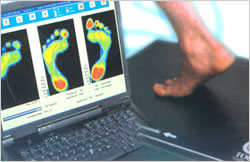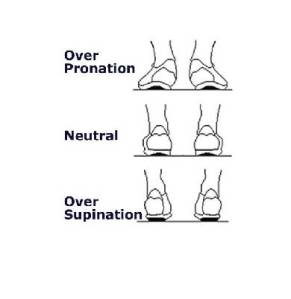Healing Through Custom Orthotics – Part 1
Introduction
Every day I treat people suffering with back pain. My patients often attribute this pain to a wide range of factors, but one that is both common and commonly overlooked are the feet and how they impact on how you feel in other parts of your body. This will be a two part-post. The fist part will take a look at foot behaviours and how they can lead to pain in particular areas of the body. The second part will focus on current research on custom orthotics and how they can help deal with pain, but also to prevent pain from occurring in the first place.
Just as steel and metal girders make up the foundation for the tallest of buildings, your feet make up the foundation for your body. When something goes wrong at the foundation, the rest of the structure is affected. By keeping your foundation strong and in alignment you are able to take the stresses off other parts of your body including knees, hips, and lower back.
How Do I Know Whether I Have A Strong Foundation?
There are a few ways to test how efficiently your feet are behaving. First of all, listen to what they tell you. Are you experiencing pain? If so, when? Early in the morning as you step out of bed? Or after walking for 5, 15, 20, or 30 minutes? Do you have back pain, knee pain, or hip pain? Do you sprain your ankles frequently? Look at the wearing pattern on your running shoes. Do your feel have calluses on them? All of these are excellent questions to ask yourself, and if you do experience any of the above symptoms, it’s a good idea to get things checked out.
In my office, I do a variety of things to check the mechanics of the feet. One is just observation. Observing the height of the arch and how it behaves as you walk, is a great indication of how the foot is operating. Postural changes are also common. Often people lean to, or favour one side or the other. This can put more stress on one foot with regards to the other.
Another great thing I do is examine your feet through something called a Gait-Scan. Gait-Scan is a technology whereby it takes pressure data from your feet as you stand on a force plate. The data obtained from the Gait-Scan can help to determine more precisely, how pressure is distributed throughout the feet, and the extent to how the arches are behaving. This information can then be used to accurately customize orthotics to your foot and its particular needs.
Keeping your foundation strong is essential in order to be pain-free and to prevent pain and problems from occurring in the future.
What Are The Types Of Feet?
An “optimal foot” acts as a foundation by providing adequate shock absorption and evenly distributing forces that occur when we walk. In an optimal gait, the foot behaves in the following manner:
Overpronation Vs. Supination
 Over-pronation and supination are behaviours of the feet where either the ankle rolls inward excessively (collapsed arches) or the ankle does not roll in enough (high arches), respectively. I diagnose these extremely common foot behaviours everyday and can design custom orthotics that put your feet in the most optimal alignment.
Over-pronation and supination are behaviours of the feet where either the ankle rolls inward excessively (collapsed arches) or the ankle does not roll in enough (high arches), respectively. I diagnose these extremely common foot behaviours everyday and can design custom orthotics that put your feet in the most optimal alignment.
An overpronator‘s arches will collapse, or the ankles will roll inwards (or a combination of the two) as they cycle through the gait. An individual who overpronates tends to wear down their running shoes on the medial (inside) side of the shoe towards the toe area. A supinator’s foot will not roll far enough when tranferring weight from heel to forefoot unevenly distributing the weight across the forefoot. An individual who supinates tends to wear down their running shoes on the lateral (outside) side of the shoe towards the rear of the shoe in the heel area.
What Conditions Can Occur As a Result of Poor Foot Mechanics?
~ by mserrick on November 15, 2011.
Posted in chiropractor, chiropractor downtown toronto, Foot/ankle pain, Knee Pain, Low Back Pain, Orthotics, Uncategorized
Tags: achilles tendonitis, chiropractor, chiropractor downtown toronto, downtown toronto chiropractor, metatarsalgia, orthotics, overpronation, plantar fasciitis, supination, toronto chiropractor


